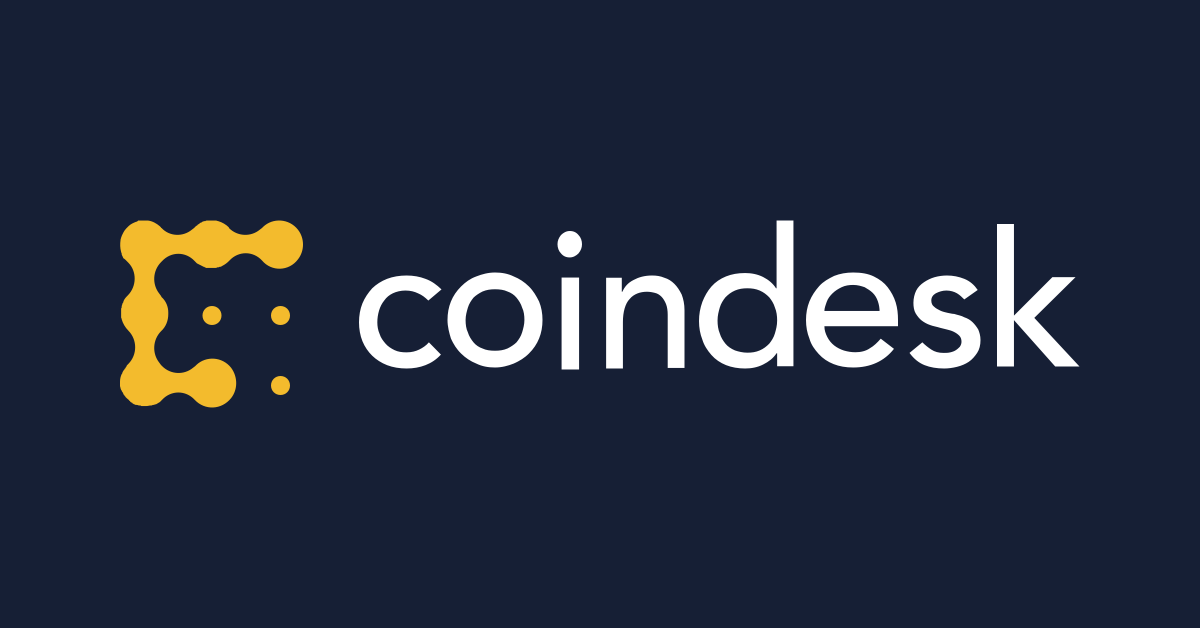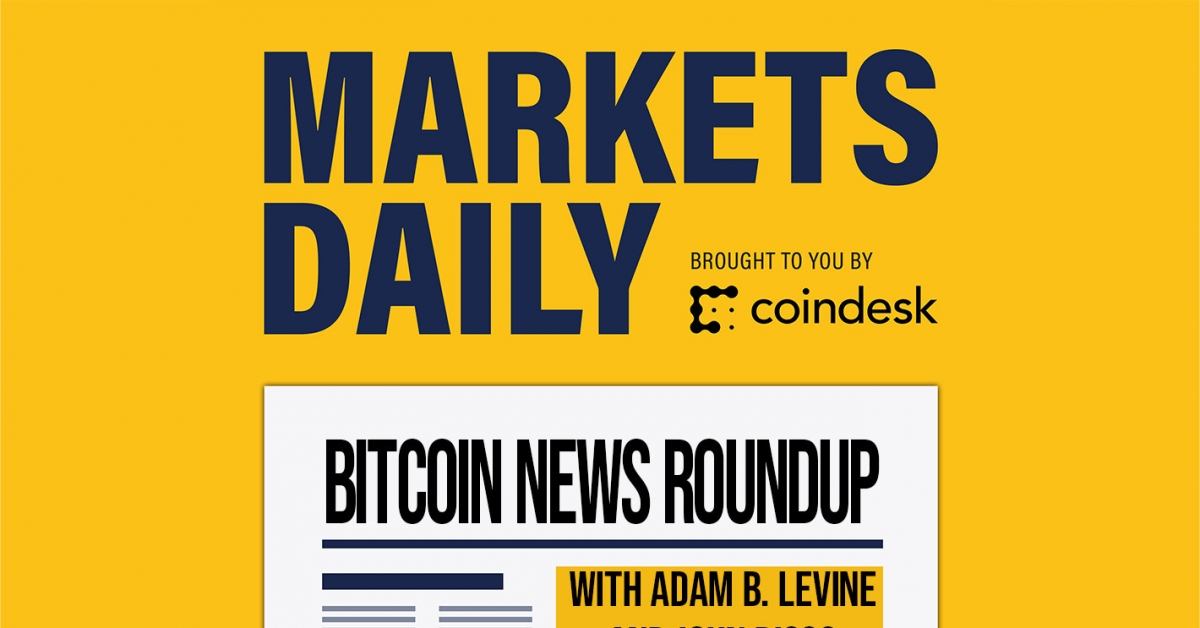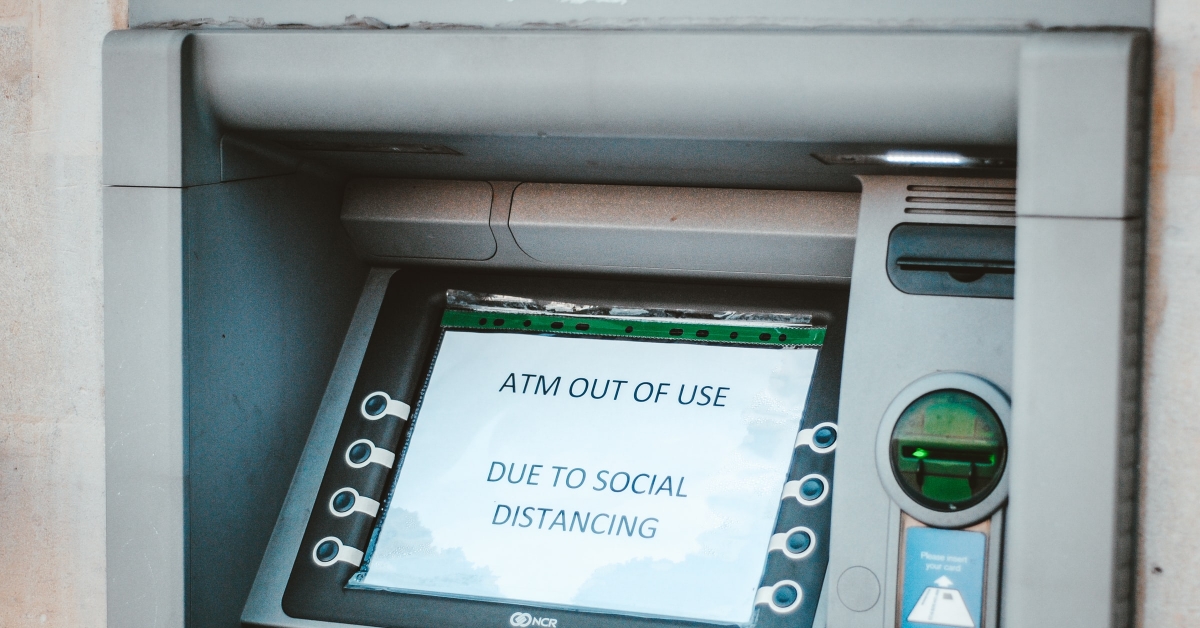Money Reimagined: COVID-19’s Crash Course in Exponential Math
Money Reimagined: COVID-19’s Crash Course in Exponential Math
If there’s one thing we can thank the coronavirus pandemic for, it’s a math lesson.
Watching an infection lead to two, then four, then eight, then 16, then 32, then 64, then 128 and so on, people found a real-world reason to comprehend the phenomenon of exponentiality. Without such context, it has been historically hard for our linear-minded brains to appreciate how rapidly network-driven growth happens. It’s a failing we’ve had for centuries. (See: the legend of the emperor who had to hand over all the rice in the land to the inventor of chess.)
You’re reading Money Reimagined, a weekly look at the technological, economic and social events and trends that are redefining our relationship with money and transforming the global financial system. You can subscribe to this and all of CoinDesk’s newsletters here.
Why bring this up in a newsletter about the changing world of money?
Because the successful emergence of any new currency, which by definition implies mass adoption, depends on similar moments of exponentiality. Money requires a network effect, helped by the self-reinforcing idea that “everyone’s using it because everyone’s using it.”
As we’ve seen in the internet age of network economics, the “hockey stick growth” enjoyed by successful social media platforms such as Facebook and Twitter occurs when interconnections between users – nodes in the network – reach a critical mass. That’s when the Metcalfe’s Law-fueled network effect of all those interconnections enters an exponential phase. It’s no coincidence we describe these spectacular growth stories as “viral.”
Continuing with that analogy, we could say these moments arise when a network’s “R0” – the infection reproduction rate that epidemiologists have closely watched during the COVID-19 – exceeds one.
Incentives for penguins
So, what makes a currency’s “R0” get above 1.0? It’s not easy from scratch, partly because of a countervailing barrier to expansion that economists call the “penguin problem”: people’s reluctance to join something until other people do so.
For centuries, particularly throughout the 20th century, the solution to mass currency adoption was clear: wielding the power of the state. National governments essentially mandated a network effect for their sovereign currencies, primarily by requiring taxes be paid in them and by declaring them legal tender.

Sure, every now and then a government would lose the confidence of its people and its currency would collapse. (We can think of these hyperinflation crises as exponential events in reverse, as groups of people accelerate their exit from the currency for something of more lasting value.) But in such cases the citizenry has hitherto almost always fled to another government’s currency, mostly to the U.S. dollar. Money and the sovereign have long been inseparable.
As readers of this newsletter know, a growing number of us see real challenges to this system on the horizon. Sure, the dollar is king during the pandemic, but that unbalanced global dependence, ironically, exposes the system’s weakness. Economic and geopolitical stress, combined with the opportunities posed by new digital currency and blockchain technologies, are creating the conditions for alternatives to challenge the global monetary system’s dollar-centric sovereign structure. Author David Birch calls it the coming “currency cold war.”
The combatants in this war still include governments (China is offering the Digital Currency Electronic Payments, or DCEP, system), but also corporations (Facebook and its partners in Libra) and decentralized communities such as Bitcoin’s. We can analyze each one’s prospects for “R0>1.0” viral network effects as a way to define this war’s battle lines.
To varying degrees, the different currency issuers and/or advocates must think not about how the state can or cannot compel adoption but how to best incentivize people to use their currency of their own free will. They must also think about how to overcome whatever disincentives currently exist against adoption – how to get around the penguin problem.
Ready-made network effects
It helps to start with a pre-existing network effect, whether that comes from government compulsion or some other factor.
For example, China’s international aspirations for the DCEP are built on the analog, non-digital renminbi, which is already used by more than a billion people. In a different way, Libra enjoys pre-existing network advantages as Facebook brings its user base of more than 2.6 billion people to the table.
Still, a pre-existing network for one form of crowd behavior does not assure the viability of another type of behavior.
If China is to meet its international currency adoption ambitions, it must entice foreign businesses and individuals to the DCEP. They’re not like Chinese nationals: they can freely choose not to use the People’s Bank of China’s currency. To win them over, Beijing will tout the new digital currency’s high-tech, programmable benefits, including new efficiencies in supply chain management and other business processes. It faces a big challenge convincing outsiders to ignore a strong disincentive: fear of surveillance of their transactions, especially in the wake of China’s crackdown in Hong Kong.
For Libra, too, global connections on social media are no guarantee it will hit that exponential moment. Regulators are putting constraints on Libra. And, as with China, users have deep concerns about surveillance, given Facebook’s record of exploiting personal data. While it’s the independent Libra Association, not Facebook, that governs the digital currency, it remains unclear whether that structure is sufficient to assure the public’s trust. And trust is a prerequisite for a currency’s success.
The alternative
What, then, of bitcoin and other more decentralized competitors in the currency cold war? What incentives and disincentives give cryptocurrencies a shot at viral expansion?
On the negative side, the same old disincentives to adoption persist: a lack of education, mistrust and price volatility. To offset that, cryptocurrency advocates typically point to value propositions that digital currencies such as the DCEP or Libra don’t have, including protection from the surveilling, controlling eyes of a centralized, controlling organization.

Such arguments have had mixed success. In price terms, bitcoin has gained 11 million-fold in the 10 years since the founding of Mt. Gox, the first viable trading site. But even with an estimated 50 million bitcoin wallets now open worldwide, cryptocurrency is still far from a mainstream industry.
How best to incentivize true, world-changing viral adoption, then? Should crypto platforms offer bootstrapping dividends, such as those that newcomer Compound pays in “yield farming” opportunities, dedicating some of the supply of COMP, the platform’s governance token, to reward users who engage in borrowing and lending activity? Are airdrops the way to go? Or should the crypto community just lay low and keep waiting for the centralized system’s meltdown to demonstrate cryptocurrency’s advantages by default?
Ultimately, crypto’s success depends on its utility, whether as a tool for building decentralized financial services, or as a store of scarce digital value in times of uncertainty. Demonstrate utility and the world will come.
The credit hierarchy
If digital entrepreneurs in the crypto community or elsewhere are to build a new payment architecture, they must first see what the existing landscape looks like. For the U.S. picture, the Federal Reserve Bank of Atlanta’s nationwide annual survey of consumer payments habits is a useful starting point. In providing a snapshot of how Americans pay for things, the report indirectly shows how our financial system defines a social hierarchy – from an “unbanked” underclass, to the “underbanked” working and middle class, to the credit-rich upper-middle and upper class. One problem with the Atlanta Fed’s survey, especially with this year’s recently released report, is that it comes out six months after the end of the survey year. The latest results capture nothing of the impact from COVID-19, which would have significantly reduced cash usage due to people’s concerns about banknote-transmitted disease and have increased online payments among the now working-from-home U.S. population. Nonetheless, the report reveals interesting long-term trends in different payment methods:

The past two years’ drop in cash usage, which now accounts for a lesser share of payments than credit cards, is important. The slide in checks usage is not surprising – along with the countervailing increase in bank account routing number payments (BANP) – but the very fact they’re used at all is noteworthy, given that consumer check payments have gone the way of the dinosaurs elsewhere. What’s most telling, I think, is the split among card payments, which have replaced cash: debit cards continue their dominance over credit cards and prepaid cards are picking up modest gains. This tells me that while a minority of Americans, including undocumented immigrants, remain unbanked and therefore dependent on cash or prepaid cards, a large number are underbanked. It suggests it is hard for people to maintain credit scores that would otherwise let them live their lives on a credit card.
Debit cards are a second-class way to pay for things. (Think of the deposit, sometimes as high as $1,000, that car rental companies require if you commit to pay with a debit instead of a credit card.) They provide the convenience of not having to carry cash around, but that’s all. Debit cards do not give their holders the lifestyle flexibility afforded to credit card holders, who can leverage the implicit backing of a financial institution that’s willing to make payments on their behalf. It speaks to how exclusion from, first, banking and, second, credit lines, imposes a burdensome “tax” on lower-income people and contributes to the United States’ ever-widening wealth disparity.
I hate to say it, but Bitcoin alone does NOT fix this. We must also lower barriers to credit, which means lowering the repayment risks that lenders perceive in servicing low- and middle-income people. Does DeFi fix that? Too early to say.
Global Town Hall
OPEN-SOURCE CBDC. The Digital Dollar Project of former Commodity Futures and Trading Commission Chairman Chris Giancarlo got a solid endorsement from Karen Petrou, one of the most trusted analysts of federal finance policy. In her “Economic Equality” blog, a must-read chronicle of how finance impacts the kind of disparities described in the prior item, she first skewers the more centralized version of a central bank digital currency – the kind contained in China’s DCEP. She worries about financial inclusion. Whereas CBDC advocates tout the model as a way to “bank the unbanked,” Petrou argues it will hurt the poor. She offers two reasons: 1) The “digital divide” means the poor don’t have access to the online tools they’ll need, and 2) the centralized surveillance of transactions will be used in a discriminatory way against low-income users. She also worries the transfer of bank deposits to Federal Reserve-based CBDC accounts would undermine the autonomy of banks to offer credit, creating incentives for the politicization of the central bank as an arbiter of lending in the economy. The solution, she says, is an “open-source CBDC,” a more decentralized model in which banks and, potentially, tech companies would be approved to create reserve-backed tokens that track the value of the actual currency. In doing so, she explicitly cited Giancarlo’s June congressional testimony about the Digital Dollar Project’s tokenized model.
DEPPOR. The world of banking and credit depends on the core concept of benchmark interest rates. Without a benchmark against which to price rates and devise a proxy for measuring risk, it’s difficult for lenders to put a price on how much to charge borrowers. One of the world’s most important benchmarks is Libor, the London Interbank Overnight Rate, which measures the daily rates at which banks holding short-term surplus cash lend it to others with short-term shortages. The thing is, Libor is deeply broken. Corruption among Libor traders, who were found to have colluded to set the rate to their advantage in a major 2014 scandal, is a known risk. But little has been done to resolve a core problem the crypto community understands well: a centralized architecture that requires users to trust these entities. It’s one reason supporters of the American Financial Exchange’s new Ameribor project, which uses a permissioned version of Ethereum as an audit trail for banks’ submissions to the rate-setting process, were excited about a quasi-endorsement from Fed Chairman Jerome Powell. But while that’s an innovative model and may boost trust in the system, it still leaves banks in the middle of the process.
So, it’s worth asking what a more decentralized finance model for rate benchmarking would look like. And on that, I was struck by a recent column by CoinShares Chief Strategy Officer Meltem Demirors, who took a DeFi lens to the rates industry. Looking at the business of yield farming, where people find interesting ways to leverage their idle crypto holdings by lending them out, Demirors exposed some parallels with the interbank lending market, where banks essentially use their surplus holdings of either cash or securities to extract value from other banks that need to borrow them for short-term needs. In a similar way, benchmark rates emerge from this short-term borrowing and lending process, though in this case across multiple assets. The really big difference is that you don’t need to be a bank to participate in a DeFi rate-setting market. DeFi has its own manipulation problems, of course, not least because of the risk that bigger crypto “whales” – the equivalent of the big Libor banks – can use their excessive holdings of the DeFi governance tokens such as COMP and MKR to skew rates in their favor. Maybe we need regulators to get involved, but a DeFi rate-setting model is certainly something to chew on. We just need an acronym to get started. How about DEEPOR – the Decentralized Peer-to-Peer Overnight Rate?

DOGE DEUX. Very wow. Obviously, they were made for each other: Dogecoin and TikTok. The incredible 1900% runup in the price of dogecoin this past week, all driven by a viral meme on the video-sharing app challenging people to get the previously dormant cryptocurrency’s price to $1, was reminiscent of dogecoin’s first hype-driven entry into public consciousness. In 2014, a vibrant community of meme and crypto enthusiasts successfully raised 67.8 million dogecoins (around $55,000 at the time) to sponsor ex-NASCAR driver Josh Wise’s car. That stunt and others helped drive the value of the coin, created for a lark by developer Jackson Palmer, to what was once sixth position in crypto market cap rankings. That’s why the return this week of another meme-infused dogecoin rally seemed so relevant.
Naturally, the price surge provoked hand-wringing about irrational investors and scammers creating bubbles. But somehow this whole thing goes beyond that. It has the feel of a collective art project. There’s no pretense about dogecoin actually being worth anything. It’s all about a community effort to make something happen. Now, those who started the mania will make out like bandits if they dump the coin at the top. But if everyone is on the game, are they actually bandits? We live in strange times.
Nathaniel Whittemore’s take on this – “Why TikTok Doge Is Everything About 2020 Finance in One Story” – for his CoinDesk Podcast Network show, The Breakdown, was excellent, by the way.
DO AS I SAY, NOT AS I DO. Nikhilesh De’s piece on all the crypto companies that received COVID-19 relief loans under the U.S. government’s Paycheck Protection Program (PPP) for small business prompted some tut-tutting on Crypto Twitter. All these entities promoting non-government money, now panhandling from Uncle Sam. How dare they! It’s a simplistic argument. If a loan program comes along that contains generous forgiveness terms for maintaining payrolls during an economic crisis, you could argue it would be unfair to your staff not to take up the offer. Also, many in the crypto business community long ago conceded to the reality of government power – just look at how many obtained money transmitter licenses and now proudly tout how compliant they are with anti-money laundering and know-your-customer rules. Surely in the midst of a serious economic crisis, they’re now entitled to get some help in return. But I feel a little differently about PPP loans going to more mainstream conservative entities whose sole reason for being is to lobby against government largesse – organizations like the Ayn Rand Institute or outspoken fiscal hawk Grover Norquist’s Americans for Tax Reform. In a tweet, CNBC’s Kayla Tausche pointed out that Norquist’s outfit, immediately after receiving $350,000 in fiscal relief, put its signature to a letter declaring that government spending “is inhibiting the fast recovery we want in jobs and incomes, not stimulating it.” Okaaaaaay.

The CoinDesk 20: The Assets That Matter Most to the Market
Digital assets aren’t what they used to be. As more people learn the fundamentals and grasp the potential for high returns, cryptocurrencies are emerging as a new asset category.
Introducing the CoinDesk 20, our list of the 20 digital assets that impact and define the market. From our new dashboard, uncover insights through price pages, key metrics, news and industry analysis, as well as video interviews with founders and key developers of the underlying technology. Dive into our freshly revamped practical guide to the assets that matter most to the market.
Relevant Reads
What Is Yield Farming? The Rocket Fuel of DeFi, Explained. Finally, the explainer you’ve been hankering for. Brady Dale lays out what this crazy new DeFi world of yield farming is all about.
Brazil’s Ailing Economy Is Helping Dollar-Pegged Stablecoins Find Traction. The COVID-19 crisis has starved developing nations of dollars, undermined their cash-dependent payment systems and put enormous pressure on local currencies. It’s a perfect storm for stablecoins in emerging markets. Now, as Leigh Cuen reports, the trend is catching on in the developing nation that has perhaps been the hardest hit by the pandemic.
London Stock Exchange Parent Assigns Financial ‘Bar Codes’ to 169 Cryptos. Another day, another small step toward institutional investment in crypto. As Sandali Handagama reports, the London Stock Exchange Group has added unique identifiers to 169 cryptocurrencies under its SEDOL system. “Naturally with the gradual institutionalisation of digital assets, a number of our clients were starting to invest in that space, so we felt it was an appropriate time to add these to SEDOL,” said LSEG’s Head of Data Solutions, James Nevin.
Weed Out the Soviet-Era Ponzi Scheme Eating Ethereum. Our columnist Lex Sokolin grew up in the Soviet Union. He knows a thing or two about Russian scamsters. In this piece he makes an impassioned plea for participants in Ethereum’s newly burgeoning ecosystem to destroy a notorious Russian pyramid scheme known as MMM. Note: a reader of a past column of mine, in which I cited a Glassnode report showing how Ethereum fees now largely service smart contract applications rather than simple ether payment transfers, pointed out how that same report showed MMM to be the biggest fee-receiving ERC-20 contract. As Solokin says, a weed can’t be allowed to take over your garden.
How Apple’s COVID-19 Policy Limited a Public Health App in Taiwan. The irony of Taiwan’s predicament – as a country that’s locked out of the international system by China – is that its people are forced to be innovative to survive. That’s been especially so during COVID-19, where it had an impressive track record in managing the crisis. Sadly, that same exclusionary situation means that the rest of the world often can’t tap into Taiwanese inventions. Here, as detailed by Leigh Cuen, we learn how a blockchain-based app for enhancing privacy in health data has been blocked by the Apple app store.

Disclosure
The leader in blockchain news, CoinDesk is a media outlet that strives for the highest journalistic standards and abides by a strict set of editorial policies. CoinDesk is an independent operating subsidiary of Digital Currency Group, which invests in cryptocurrencies and blockchain startups.









